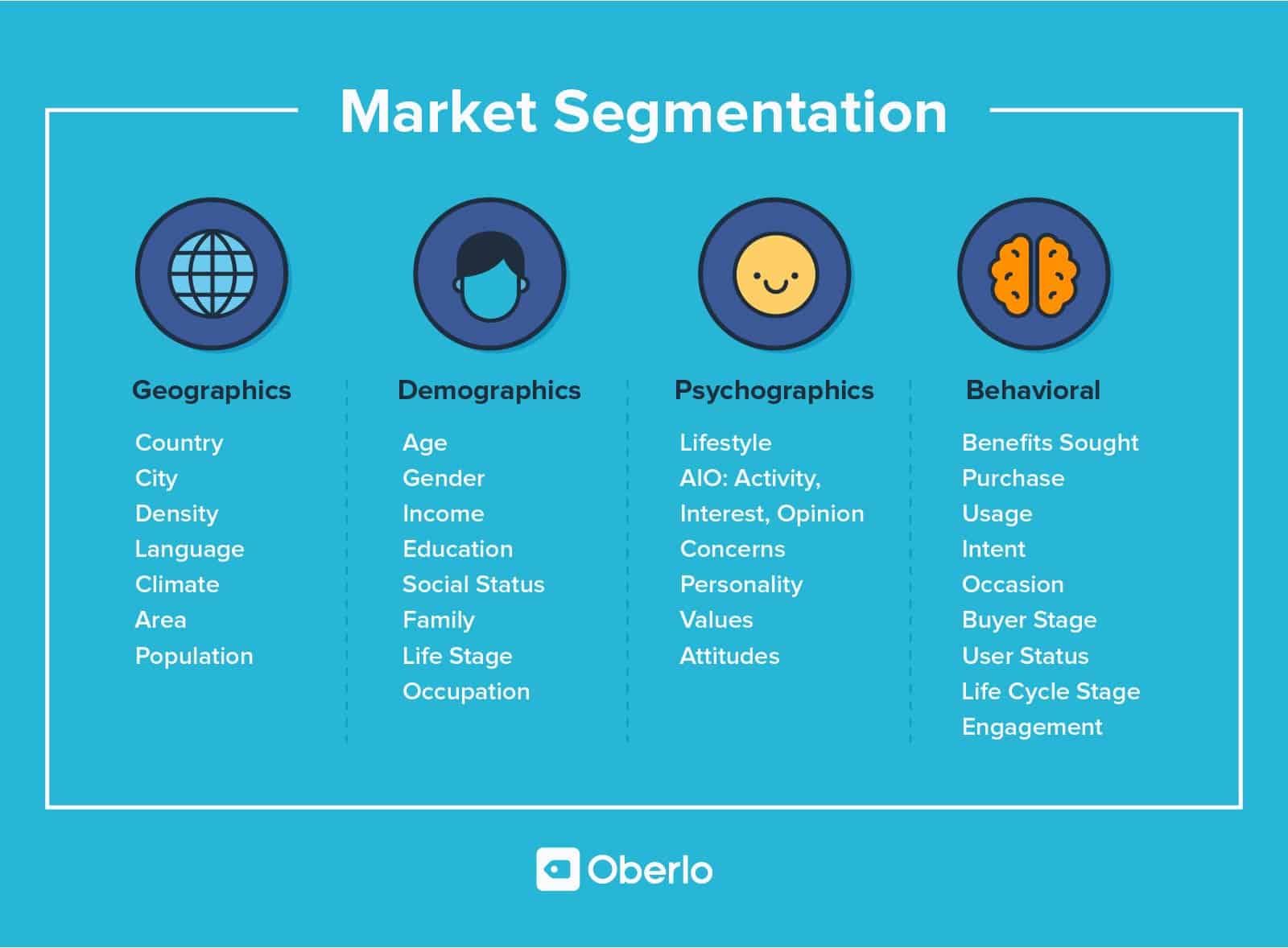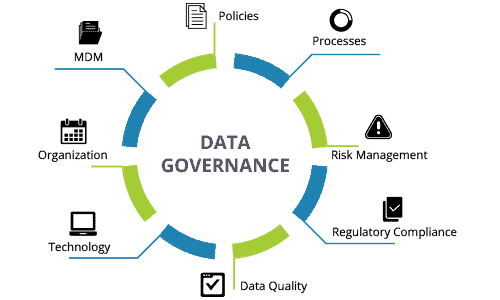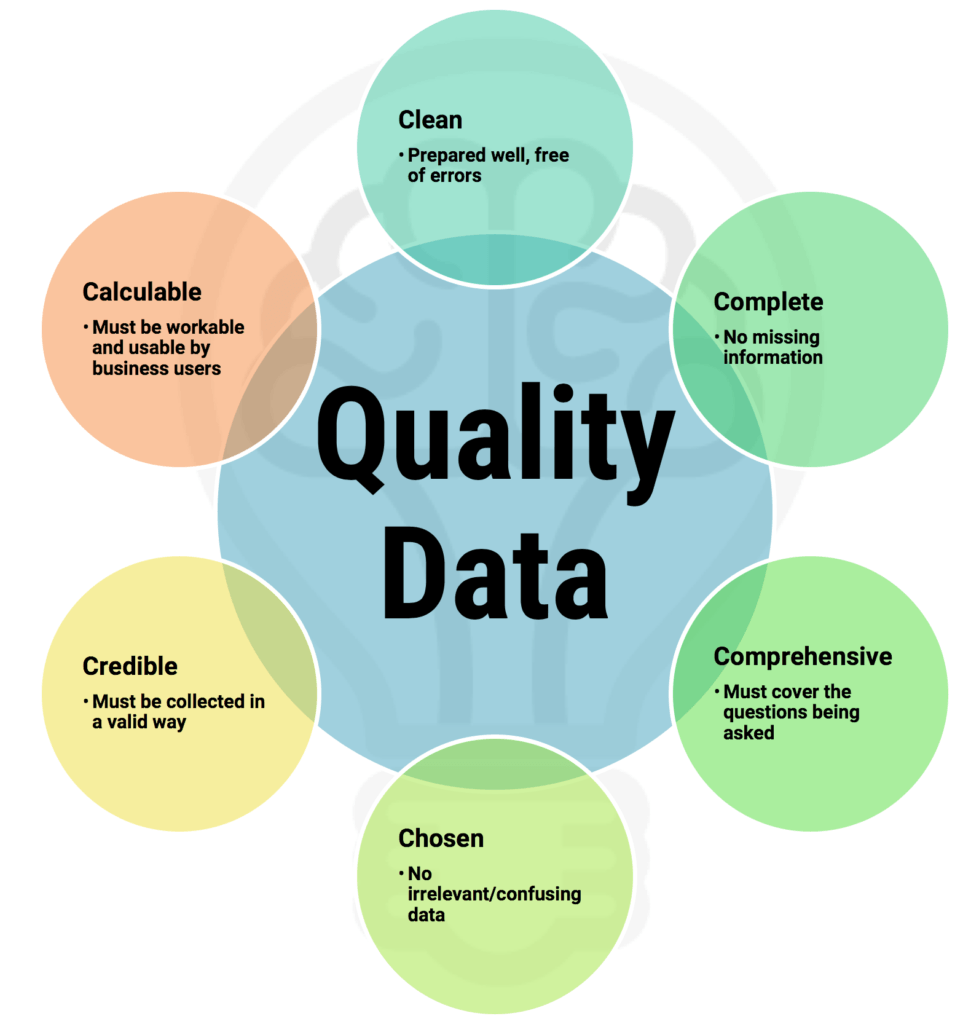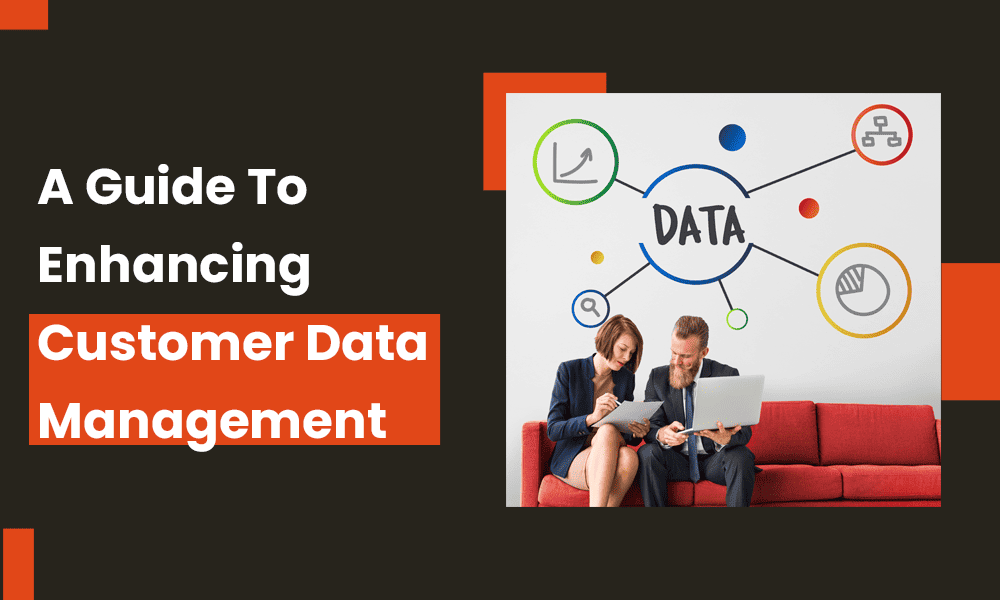One of the most valuable pieces companies can use to optimize their operations is reliable, accurate, complete, and up-to-date customer data. However, companies face a major challenge in ensuring the quality and accuracy of this data, largely because consumers’ needs change constantly and it’s easy to clutter the database with unnecessary or outdated information.
But as tasking as this process may seem, companies can use proper customer data management strategies to streamline collecting and handling personal information. From names to phone numbers, financial data, social security numbers, house addresses, etc., following the required data management policies tailored to your business is essential. This will help you define, interpret, and use your customer data to make informed business decisions.
This article explains the basic concepts around customer data management, including its primary components and a few best practices to give you more control over your customer information.
Table of Contents
What is Customer Data Management (CDM)?
Customer Data Management (CDM) refers to the processes involved in gathering, organizing, analyzing, and storing customer data. It includes the standards, strategies, tools, and approaches employed to understand customers better and unify data across multiple sources. Additionally, insights from well-managed customer data allow businesses to proactively provide targeted solutions to customer problems while improving personalization and customer satisfaction levels.
Usually, customer data is cluttered and disorganized because different departments (sales, marketing, support, etc.) collect and gather them from multiple sources, and most times, the data is incomplete, outdated, inaccurate, or inconsistent. According to Validity, 44% of study respondents say they lose over 10% of annual revenue due to low-quality CRM data. You may experience serious damages, losses, and missed opportunities without strategic approaches to handling and controlling your customer data.
Proper customer data management also supports well-defined techniques for assessing your workflows to highlight potential security risks, thus enhancing data protection and privacy.

How Important is Customer Data Management for Your Business?
Customer data can mean any information the customer provides that defines any part of their lives. This cuts across many attributes and characteristics so large that mismanagement can lead to missed opportunities, data loss, and reputational damage. Here are five primary benefits of customer data management.
1. It provides better insights into customer behavior
Proper data collection, analysis, and management provide an inside view of your ideal customer behavior, preferences, and interests. These insights enable you to study specific patterns and trends that buyers follow, thus helping you develop well-suited strategies to improve customer satisfaction and experience.
2. It reduces data errors
Data errors can arise from several sources such as incomplete or outdated information, manual data entry issues, or misinterpretation of data. However, proper data management offers best practices for ensuring customer information quality, accuracy, and reliability to minimize data errors and potential losses.
3. It supports scaling
As your business grows, your customer database also expands. While this is great, handling such enormous data – especially with manual operations – overwhelms and may lead to inefficiencies or multiple data errors. But with customer data management strategies, you can easily collect, manage, and handle your customer database, regardless of size.
4. It unifies your customer data
Customer data from numerous sources can be inconsistent and disorganized since it comes from different departments or multiple channels. Managing this data entails, putting them in one place to get a holistic view of customer profiles and their interactions across your brand. This ensures clean, high-quality data, removes duplicates, and improves targeted campaigns.
5. It ensures compliance with data protection laws
Data protection compliance involves specific data collection, security, and storage requirements. Consequently, customer data management supports well-suited practices and approaches to minimize potential security risks and breaches.
Read also: Master Customer Data: A Guide For Customer Insights
5 Key Components of Customer Data Management
Customer data management involves several processes from collection to transformation and distribution. Each stage provides appropriate techniques for refining data and improving its quality.
The five key components of CDM include the following.
1. Data collection
Data collection is an integral part of customer data management, as it involves processes for acquiring and gathering customer data from multiple sources and channels. At this stage, the data is cluttered and may contain unnecessary information.
This data is usually first-party and can be collected through several channels such as landing pages, opt-in forms, pop-ups, questionnaires, feedback forms, etc. Even more, this can happen at any stage in the customer journey.
Reliable and accurate data depends on proper collection techniques, which will determine how you analyze and interpret your customer information. So, this process is crucial for delivering valuable insights and making smart decisions.
2. Data organization and segmentation
The next process after data collection involves sorting, arranging, and organizing the reports orderly and systematically. The initially collected data need to be placed in groups to be accessed and extracted easily.
You can organize your data in segments based on specific criteria and attributes. These categories may include the following.
- Demographic: Descriptive, people-based data, e.g., name, age, gender, nationality, marital status, occupation, email address, religion, etc.
- Geographic: Location-based data e.g., country, state, zip code, house address, etc.
- Behavioral: Based on interaction with your site. It can further be segmented into subcategories based on engagement, funnel stage, website activity, purchase history, device type, etc.
- Psychographic: Based on interests, preferences, hobbies, lifestyle, values, etc.

Generally, the data is either quantitative or qualitative. Proper organization and segmentation enhance personalization and promote effective use of marketing resources.
3. Data analytics
Data placed in segments have no meaning until analyzed to provide valuable insights for making informed decisions. These reports are arranged to show specific patterns and trends in customer behavior and interactions with your brand over a defined timeline.
Additionally, customer data analytics involves linking up multiple systems and consolidating data across multiple sources and segments to view your customer journey fully. The techniques involved in this process also enable you to identify and prioritize high-quality leads.
Moreover, data analytics supports valuable reports for tracking your performance over time and identifying inconsistencies or loopholes in your customer database.
Read also: Mastering Customer Data Integration: Process and Strategies
4. Data Activation
Data activation involves using the reports and insights from your analytics to make informed decisions. It directs your business activities, thus putting your data to work.
Data activation supports processes determining how you will run your marketing campaigns across several channels and how the data can be integrated into various systems to enhance other business operations.
Also, it presents unified and clean data to enable teams across various departments to streamline their workflows, optimize campaigns, and enhance customer satisfaction levels.
5. Data storage
This is a crucial component of customer data management as it preserves data for present and future use. This can include raw or processed data and the media can be physical or virtual, depending on your business operations.
As your customer data expands, you can determine which data to store or discard based on need and priority levels. It is important to clean your database regularly and remove unwanted data. For example, email addresses of customers unsubscribed from your email list.
Additionally, you can create standards that determine what data you should store and how long it will be in the database before it is discarded.
Read also: Data-Driven Marketing Guide: Definition, Tips, and Examples
Customer Data Management Best Practices
Proper customer data management involves several techniques that help your business handle, control, and use data effectively. These strategies range from ensuring data quality to providing enhanced security, adopting reliable technologies, and ensuring data compliance. The seven CDM best practices include the following:
1. Create a data governance framework
Data governance is an umbrella term that comprises all the internal processes, policies, and systems that determine how data is gathered, used, stored, accessed, protected, and distributed. It provides a means for establishing authority and accountability around datasets.
As part of customer data management strategies, data governance provides rules and policies to ensure data is collected ethically and complies with the regulations. It also involves several components that enable businesses to properly manage data across stakeholders and various departments within the organization.

Creating a data governance framework involves developing operating standards and requirements for handling your customer data. It also encompasses data classification, modeling, tracking, and testing.
Read also: How To Perfect Your Customer Data Governance
2. Adopt data security protocols
Customer data can be anything from names to gender, IP address, date of birth, likes and dislikes, house addresses, and phone numbers. But while some may be accessed by the public (e.g., name, gender, date of birth, etc.), others are considered confidential or sensitive and should be kept private (e.g., social security numbers, house addresses, bank and financial information, phone numbers, etc.).
Data security management involves simple and complex protocols that ensure the safety of customer data to mitigate data breaches or potential security risks. It protects customer data from manipulation or illegal/unauthorized access, disclosure, and use. In 2019, Verifications.io suffered a massive data breach, exposing about 763 million records. According to IBM’s report, data breaches have an average projected cost of nearly $4 million globally.
Data security also involves setting protocols and policies around the company’s storage devices (hardware and software), database, admin controls, authorized personnel, etc.
Implementing a solution from proxy-cheap can add an extra layer of security when managing customer data, offering a cost-effective means to safeguard sensitive information from potential threats.

Therefore, customer data management requires sophisticated tools and technologies to mask, encrypt, and redact sensitive or confidential information. This will prevent the activities of bad actors, cybercriminals, phishers, and even insider threats, thus safeguarding the privacy of your customers’ data.
Read also: Top 9 Customer Data Platforms With Pros And Cons
3. Adopt reliable customer data management technology platforms
Customer data management involves several complex processes from data collection to storage, validation, analysis, and protection. Although these processes can be handled manually, it is not ideal, as it can reduce your team’s productivity and operational efficiency, and increase the chances of human errors, misinterpretation, inaccuracy, and data breaches.
Data management technology platforms cover various functionalities from collection to organization, storage, analysis, retrieval, etc. These platforms offer robust solutions for managing your customer data to:
- Identify audience segments and customer journeys
- Secure and store customer information
- Track customer interactions
- Have a unified customer view
- Provide valuable insights for improvements
- Optimize marketing campaigns
- Scale your business operations.
Gitnux reports that manual data entry is a significant challenge for salespeople, with 23% citing it as their biggest challenge when using a CRM. However, Lumen Data revealed an interesting finding: worldwide expenditure on data management technologies is projected to reach $315 billion by 2024. This means businesses are gearing towards enhancing their customer data management systems by adopting suitable data management technologies.
Read also: A Definitive Guide To Customer Data Analytics
4. Improve your data quality
Customer data usually come in sets and can be so large they may contain unnecessary, incomplete, outdated, or incorrect information. Even more, different departments use various tools and software applications to collect this data and this can, sometimes, lead to data-capturing inconsistencies, data decay, or data duplication. In this case, companies may find having a unified customer view challenging.
Poor quality data can lead to inaccurate analytics, missed opportunities, wasted resources, and reputational damage. Therefore, customer data management entails using defined policies to monitor, review, and clean your data to ensure quality and accuracy.

Measures for maintaining high-quality data involve asking these questions:
- What data should I collect and in what format?
- Why do I need this data?
- Can my business still run without this data?
- How can I gather this data?
- Where can I store this data?
- Who can access this data?
The data you collect from your customers will depend on your company goals and objectives, and these measures will determine what data is considered necessary or unnecessary. High-quality data can improve your customer database, and you can make informed business decisions with valuable and timely insights.
Read also: 10 Leading Customer Tracking Software For 2024 [Micro Reviews]
5. Comply with data protection laws
Data protection laws like the GDPR contain specific requirements to protect the rights of individuals over their personal information. It also sets guidelines for collecting, processing, storing, and protecting consumer data by ensuring companies take adequate security measures to prevent the mismanagement of customer data.
The GDPR contains seven key principles that detect how businesses or individuals can collect or process personal information. They include:
- Lawfulness, fairness, and transparency
- Purpose limitation
- Data minimization
- Accuracy
- Storage limitation
- Integrity and confidentiality

In customer data management, data compliance enables business owners to take specific measures to gather information ethically, curb the attacks of bad actors, and ensure the legal use of personal information and intellectual property.
The protection policies and procedures in these laws vary based on where your business operates and the customers you serve. However, they all have similar requirements and are geared toward giving your customers control over their data and letting them choose how you handle their personal information.
Read also: Customer Segmentation Examples & How To Follow Them
6. Streamline your processes and workflows across departments
The various departments in your organization collect customer data based on their operation and functions. For example, the marketing team may collect the website activity, product feedback, personal and geographical characteristics, etc. while the sales team may collect data like leads, customer lifetime value, revenue per customer, etc.
Usually, this data is cluttered and incomplete, thus making it difficult to have a unified customer view. When there is a lack of communication between teams, it can lead to data silos and poor customer experiences.
For example, the sales team knows customers who have purchased the company’s products but the marketing team doesn’t. If this data is not shared with the marketing team, they may spend more resources targeting their campaigns to the wrong audience. So, while the customers expect shipping details, they’re also receiving more promotional offers for the same product they ordered – this is a frustrating experience.
As companies aim to streamline their workflows and processes, they adopt tools that support seamless integration with customer data management platforms. Data integration allows companies to aggregate customer data from multiple systems to provide a single source of truth and enhance team collaboration, thus promoting more personalized and targeted campaigns.
7. Train your teams
A successful customer data management strategy lies in the ability of your teams to manage and handle customer data effectively. Handling customer data and tailoring it to the functions specific to a particular department requires critical training and assessment. This also entails proper guides that help your employees know what data to collect and how to interpret them.
Different departments such as IT, legal, marketing, sales, support, etc., collect and use customer data for different purposes, so it’s essential to help them understand the need for collaboration. This way, they can build healthy relationships through effective communication and develop a good company culture.
Read also: 10 Customer Management Strategies to Boost Customer Loyalty
Conclusion
Customer data is dynamic and complex, so having a structured framework for gathering and processing this data is crucial for your business growth. This is because your decisions largely depend on the insights and reports from your data analytics. Improper management of customer data can harm your business operations and lead to data breaches and security risks.
Several principles guide customer data management from collection to organization, analytics, activation, and storage. These principles encompass data acquisition from multiple sources, data security, data usage, and team efficiency.
If you want to try the world’s most affordable CRM solution integrated with marketing and support suites, try EngageBay for free.

My sister runs a dental clinic and she is offering to do free checkups this January, so she needs software that can help her manage the signup forms for it soon. I appreciate you letting us know that proper data management allows us to reduce errors by ensuring customer information quality, accuracy, and reliability with the help of modern technology. I’ll keep this in mind while I call services in Franklin for health form management soon.